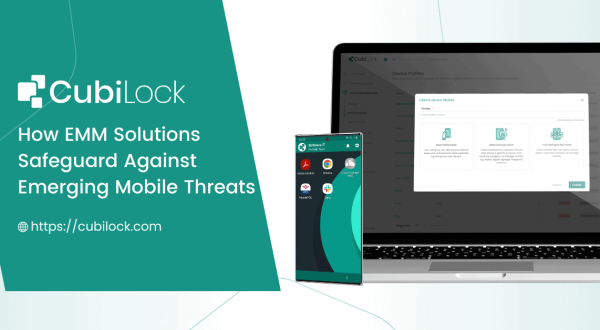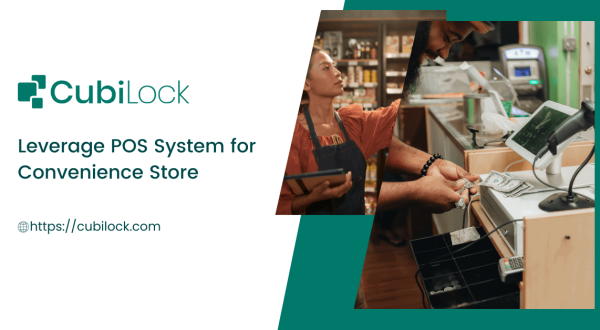Kiosk Mode: A Green Energy Solution for Modern Businesses
- September 15, 2023

In the quest for sustainability and environmental responsibility, businesses worldwide are constantly seeking innovative ways to reduce their carbon footprint. One often-overlooked solution is the implementation of “kiosk mode” on their electronic devices. This technology, which limits the functionality of devices to a specific set of applications or functions, can significantly benefit businesses and contribute to green energy efforts in several ways. Let’s explore the environmental benefits of kiosk mode and how it can help businesses play a crucial role in promoting green energy and sustainability.
Understanding Kiosk Mode
Before delving into the environmental benefits of kiosk mode, it’s essential to grasp the concept itself. kiosk mode is a software feature that restricts the use of a device to a predetermined set of applications or functions, effectively locking it down for a specific purpose. Commonly used in various industries, including retail, hospitality, healthcare, and education, kiosk mode ensures that the device remains dedicated to its intended function, reducing the risk of unauthorized access or misuse.
Traditionally, kiosk mode has been employed for purposes such as customer self-service kiosks, digital signage, point-of-sale terminals, and interactive information displays. However, its applications are not limited to these sectors. With the increasing focus on sustainability and energy efficiency, kiosk mode is gaining prominence as a tool to help businesses reduce their environmental impact.
The Environmental Impact of Modern Businesses
Modern businesses heavily rely on electronic devices such as computers, tablets, and smartphones to carry out their operations efficiently. While these devices are essential for productivity, they also consume a significant amount of energy, contributing to the overall carbon footprint of a business.
Here are some ways in which electronic devices impact the environment:
- Energy Consumption: The energy consumption of electronic devices, especially when left idle or running unnecessary applications, can be substantial. This results in higher electricity bills and an increased demand for energy, often sourced from fossil fuels.
- Electronic Waste: Rapid technological advancements lead to the disposal of outdated devices, contributing to electronic waste (e-waste). E-waste poses serious environmental hazards when not properly managed or recycled.
- Manufacturing Impact: The production of electronic devices involves the extraction of raw materials, manufacturing processes, and transportation, all of which require energy and have associated environmental costs.
How Kiosk Mode Benefits Businesses
Implementing kiosk mode can have several direct benefits for businesses. These advantages often translate into both cost savings and a reduced environmental footprint:
Energy Efficiency
Kiosk mode ensures that devices are used only for their intended purpose, preventing unnecessary energy consumption. When devices are left unattended or used for non-work-related activities, they continue to draw power, contributing to higher energy bills and increased greenhouse gas emissions. By limiting device functionality to essential tasks, businesses can significantly reduce their energy consumption and associated costs.
Prolonged Device Lifespan
Constantly running unnecessary applications or allowing unrestricted access to devices can lead to faster wear and tear. In contrast, kiosk mode benefits environment by extending the lifespan of electronic devices by preventing unauthorized use and minimizing exposure to potentially harmful software or activities. As a result, businesses can reduce their need for frequent device replacements, saving both money and resources.
Enhanced Security
Security breaches and data theft can have severe consequences for businesses, including financial losses and damage to their reputation. kiosk mode enhances device security by limiting access to authorized applications and functions. This not only safeguards sensitive information but also reduces the risk of malware and cyberattacks. In turn, a more secure computing environment reduces the need for costly security measures and incident responses.
Streamlined Operations
Kiosk mode can improve the efficiency of business operations by ensuring that devices are used exclusively for their designated tasks. For example, in a retail environment, point-of-sale terminals running in kiosk mode can process transactions more quickly and accurately. This efficiency can lead to higher customer satisfaction and increased sales while reducing the time and resources needed to manage and troubleshoot devices. Enabling multi or single app mode, empowers businesses to provide access to only applications that are approved by IT admins, thus improving the device’s health and purpose.
Lower Maintenance Costs
Devices operating in kiosk mode are less susceptible to software conflicts and user-induced errors, reducing the need for extensive maintenance and technical support. This results in lower maintenance costs and less downtime, allowing businesses to allocate their resources more effectively.
Kiosk Mode as a Green Energy Solution
Now that we’ve explored how kiosk mode benefits environment, let’s delve into its role as a green energy solution and how it contributes to environmental sustainability:
Reduced Energy Consumption
One of the most significant environmental benefits of kiosk mode is its ability to reduce energy consumption. By restricting devices to specific applications or functions, businesses can ensure that their electronic equipment operates efficiently. Devices are less likely to be left idling or used for non-productive purposes, thereby minimizing wasted energy.
For instance, in a corporate office setting, computers equipped with kiosk mode may only run essential business software, preventing employees from using them for personal tasks or leaving them powered on overnight. This simple change in behavior can lead to substantial energy savings over time.
Lower Carbon Footprint
Reducing energy consumption directly translates to a lower carbon footprint. Many businesses rely on fossil fuels for electricity generation, which releases greenhouse gases into the atmosphere. By implementing kiosk mode and optimizing their device usage, businesses can contribute to reducing the demand for electricity and, consequently, lower the associated carbon emissions.
Furthermore, businesses that actively promote sustainability and environmental responsibility through their operations can enhance their brand image and attract environmentally conscious customers. This positive perception can lead to increased customer loyalty and support.
E-Waste Reduction
Kiosk mode not only reduces energy consumption but also extends the lifespan of electronic devices. When devices are used solely for their intended purpose and are less prone to misuse or damage, they are more likely to remain in service for a more extended period. This reduces the rate at which businesses need to replace their devices, subsequently decreasing the amount of electronic waste generated.
Electronic waste is a significant environmental concern due to the hazardous materials contained in electronic devices and the challenges associated with their proper disposal. By adopting kiosk mode and promoting device longevity, businesses can play a crucial role in mitigating the e-waste problem.
Resource Conservation
The production of electronic devices requires the extraction of valuable natural resources, including minerals and metals. Additionally, manufacturing processes and transportation contribute to resource consumption and environmental impact. By using kiosk mode to prolong device lifespans and reduce the need for replacements, businesses indirectly contribute to resource conservation and minimize their reliance on resource-intensive manufacturing practices.
Sustainable Business Practices
Implementing kiosk mode aligns with broader sustainable business practices. By actively seeking ways to reduce energy consumption, lower operating costs, and minimize their environmental footprint, businesses can position themselves as responsible and forward-thinking organizations. This can lead to various benefits, such as increased investor interest, improved employee morale, and a positive impact on their local communities.
Case Studies: Real-World Examples
To illustrate the environmental benefits of kiosk mode in practice, let’s examine a few real-world case studies of businesses that have successfully adopted this technology:
Retail Industry
A chain of supermarts can easily implement kiosk mode on all of their devices, regardless of their location. By transforming devices into an mPOS, the devices reduced energy consumption of its checkout counters by 30%. This not only led to significant cost savings but also helped the company achieve its sustainability goals by lowering its carbon emissions.
Hospitality Sector
Several eco-friendly hotels have embraced kiosk mode in guest rooms. By using tablets in kiosk mode to control room temperature, lighting, and entertainment systems, guests can conveniently reduce energy consumption when they leave their rooms. These hotels have reported a 15% reduction in energy use, contributing to their green energy initiatives and earning recognition as sustainable accommodation options.
Educational Institutions
Universities and educational sectors can implement kiosk mode on devices used in their labs, manage applications on devices used by students. By limiting access to academic and research-related applications, institutes can reduce energy consumption.
Best Practices for Implementing Kiosk Mode
To maximize the environmental benefits of kiosk mode, businesses should consider the following best practices when implementing this technology:
Identify Key Functions
Determine the essential applications and functions required for your business operations. By focusing on these core functions, you can create a kiosk mode configuration that minimizes energy consumption and device wear and tear.
Regularly Update and Optimize
Stay up-to-date with software updates and security patches for the applications used in kiosk mode. Regular updates can improve energy efficiency and security while ensuring that devices operate smoothly.
Employee Training
Educate employees on the purpose and benefits of kiosk mode. Encourage responsible device use and emphasize the importance of reducing energy consumption to support the company’s sustainability goals.
Monitor and Measure
Implement systems to monitor device usage and energy consumption. Analyze the data to identify opportunities for further optimization and energy savings. Regularly measure and report on the environmental impact of your kiosk mode implementation.
Seek Certification and Recognition
Consider pursuing certifications and awards related to sustainability and environmental responsibility. These can enhance your company’s reputation and demonstrate your commitment to green energy practices.
Also read: How to lock down Android tablet for business?
Kiosk mode is more than just a tool for securing and streamlining device usage; it’s a powerful solution that can help businesses significantly reduce their environmental footprint and contribute to green energy efforts. By implementing kiosk mode and adhering to best practices, businesses can achieve energy efficiency, lower their carbon emissions, reduce electronic waste, conserve resources, and promote sustainable business practices. In doing so, they benefit financially and become active participants in building a more sustainable and environmentally responsible future.
Device Security Analyst, loves testing devices that are used for dedicated purposes.







